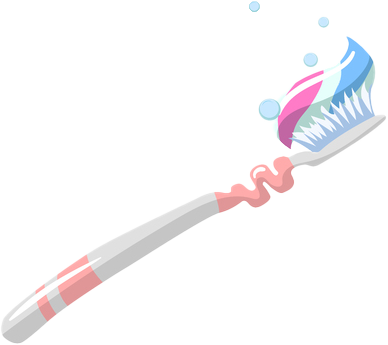 Bloomsburg, Danville, and Lewisburg, PA
Bloomsburg, Danville, and Lewisburg, PA
Tooth loss is a condition that is increasingly common in the United States: one study suggests that one out of every 10 American adults has suffered the loss of one or more permanent teeth (other than wisdom teeth that were pulled). This number gets higher with age, as does the total average number of teeth lost.
The consequences of missing teeth can be significant, so a dentist will almost always recommend replacing teeth that have been lost. There are a number of ways to do this, largely depending on how many teeth are lost and where. If only one tooth is missing, a dentist will likely recommend a dental implant. Why is tooth replacement recommended? Why are implants the best course of action in some cases, and how does implantation work?
Consequences of tooth loss: oral health and overall health
Whether a tooth is missing because of decay or an accident, its absence can have a number of repercussions on a person’s health. The first and most immediate of these is an overall decline in oral health. This is because:
-
Periodontal disease
A missing tooth socket tends to collect bacteria which can resist cleaning by brushing. This bacteria can also lead to periodontal disease, which can attack the jawbone and weaken it. This can, in turn, lead to the loss of even more teeth. Furthermore, the jawbone is designed to have teeth in it, and the act of chewing keeps the jawbone healthy. A missing tooth can weaken the jawbone even if periodontal disease is not present.
-
Shift in alignment
Every tooth plays a role in keeping the teeth in alignment. One that is not there cannot perform this function, which can cause a shift in the others. This shift in bite can cause different kinds of wear on the teeth that have moved, possibly leading to headaches and pain from grinding teeth. Remaining teeth can become damaged, and if the shift makes flossing more difficult, as it often does, it could lead to further tooth loss.
A shift in alignment can also put stress on the temporomandibular joint (TMJ), which connects the lower jaw to the skull. This is the joint that allows the mouth to open and close, and strain on it can make chewing, drinking, swallowing, speaking, singing, or even yawning painful.
-
Increased risk of other ailments
Tooth loss seems to play a role in a number of other conditions, some of them life-threatening. A study conducted in Europe in 2018 shows a link between a missing tooth a heart disease and heart attack. An American study from 2019 also demonstrates this link, as well as a link to stroke. Missing teeth seem to indicate a greater risk for oral cancer, too.
Missing teeth can also heighten the risk of periodontal disease. As another study from 2019 shows, periodontal disease can increase the risk for diabetes. Also, scientists have noted that excessive bacteria can invade the bloodstream of pregnant women and even attack the fetus, causing premature birth and low birth weight.
Consequences of tooth loss: appearance and mental well-being
Missing teeth can also affect a person’s psychological health. For example, a missing tooth in a prominent place (such as a front tooth) will have a noticeable effect on a person’s appearance. This can negatively impact self-confidence. A missing tooth might make someone too self-conscious to smile, and since a smile conveys comfort, approval, certainty, happiness, and relaxation, a person who no longer smiles may be perceived as grim, sad, angry, nervous, or timid. It is not hard to see how this might prove detrimental to that person’s interactions at work, or to their interpersonal relationships.
The front teeth also tend to influence speech. A missing front tooth might make it more difficult to speak or speak comfortably.
Even if the missing tooth is less conspicuous – for example, a bottom or back tooth – or does not alter speech, there might be other negative outcomes. The place where the missing tooth used to be might take on a sunken aspect, cause wrinkles, and change the overall shape of the nose.
Finally, a missing tooth can have other unpleasant side-effects. The site of a lost tooth often collects more bacteria, which can lead to bad breath. Moreover, certain foods may be more difficult or even impossible to eat, causing distress if favorite dishes must be avoided.
Why a dental implant?
Considering all the detriments of missing teeth to the health of body and mind, it is easy to see why dentists will recommend replacing a missing tooth. There are a number of ways to do this.
Historically, tooth replacement options have included dentures, which are often recommended if the person has lost most of his or her teeth, or a partial denture if several missing teeth are in different places in the mouth and not next to each other. If two or more missing teeth are right next to each other, a bridge might be recommended: this involves attaching replicas of missing teeth made from plastic or porcelain onto an apparatus which is anchored on existing teeth, forming a “bridge” over the gap.
A partial denture or bridge might work for a single tooth, as well. All tooth replacement techniques have the benefit of restoring a person’s appearance and ability to speak. Likewise, they all greatly reduce the risk of periodontal disease. However, in the last several decades, a dental implant to replace a single missing tooth has become a very popular method. This is largely because the implant comes closer than other tooth replacements in behaving like the missing tooth, which means it will stimulate the jaw and prevent bone loss. Plus, an implant is significantly better that other methods in warding off periodontal disease.
Dental implant procedure
Dental implants are typically installed in three or four stages:
-
Bone graft
If necessary, the jaw is prepared and strengthened for the implant using a bone graft
-
Implantation
The jawbone is drilled to make a “root” for the replacement tooth, which is the implant proper. Typically made of titanium alloys, an implant closely resembles a screw.
At this point, a period of some months needs to elapse to allow for the jaw to heal and the implant to merge with the bone, a process called “osteointegration.” In the meantime, a temporary cap is placed over the implant.
-
Abutment
Once osseointegration is successful, an abutment is placed atop the implant. The crown will be fitting onto the abutment.
Sometimes, oral surgeons install the implant and abutment simultaneously, though others do these as separate procedures. At any rate, following the placement of the abutment, a period of time is needed to allow the gums to heal before the last step.
-
Crown
A crown is a re-creation of the missing tooth, often fashioned from porcelain. It is attached to the abutment, and once it is properly fitted, the procedure is complete.
Missing teeth can be dismaying, but there are many treatments – such as implants – available to help a person smile again. A dentist will recommend the best course of action for missing teeth.
If you are interested in dental implants in the Bloomsburg, Danville, and Lewisburg areas, contact Hamilton Dental Care today by calling (570) 316-0887 to investigate your dental options.






Comments are closed